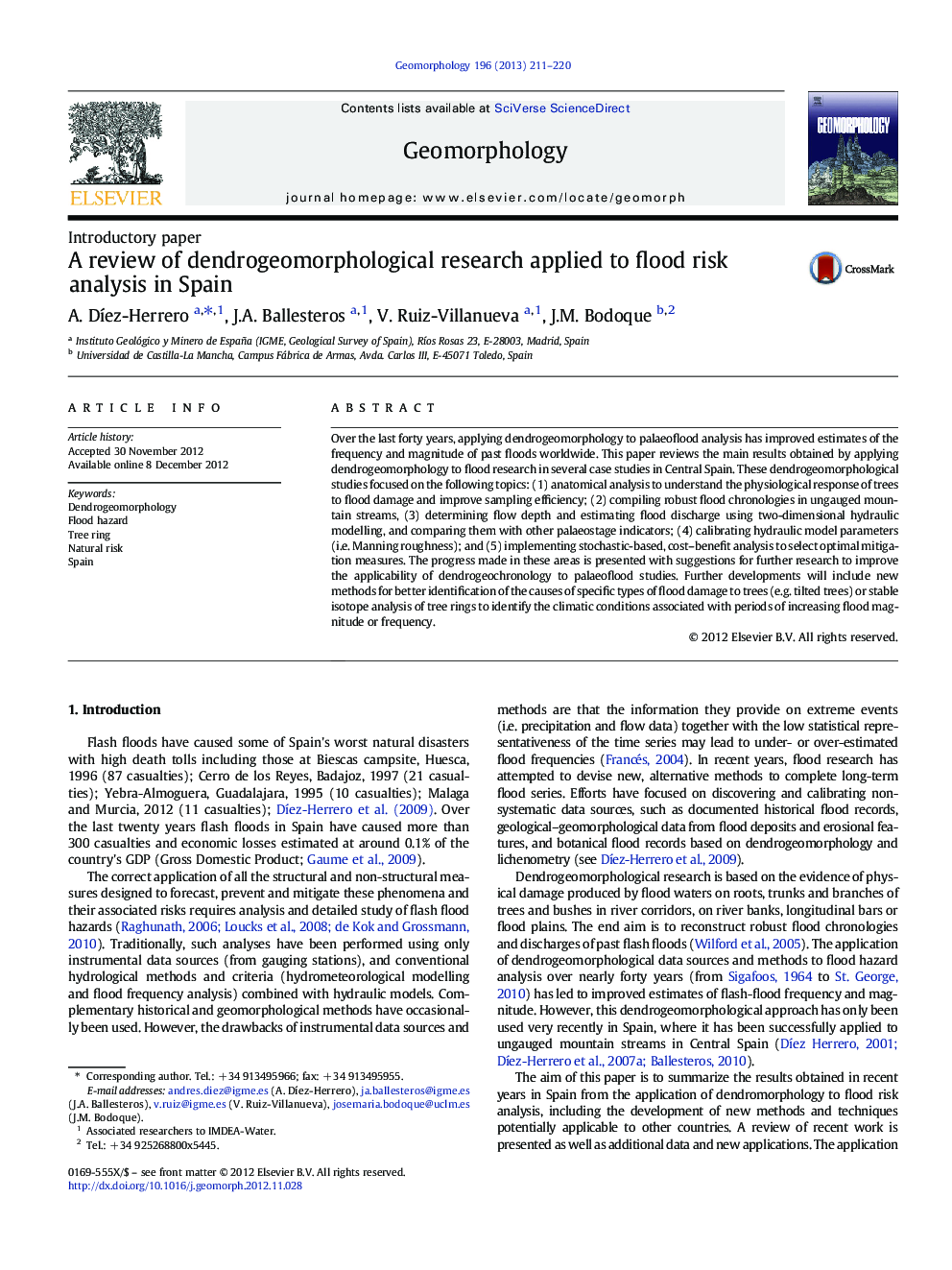| Article ID | Journal | Published Year | Pages | File Type |
|---|---|---|---|---|
| 4684862 | Geomorphology | 2013 | 10 Pages |
Over the last forty years, applying dendrogeomorphology to palaeoflood analysis has improved estimates of the frequency and magnitude of past floods worldwide. This paper reviews the main results obtained by applying dendrogeomorphology to flood research in several case studies in Central Spain. These dendrogeomorphological studies focused on the following topics: (1) anatomical analysis to understand the physiological response of trees to flood damage and improve sampling efficiency; (2) compiling robust flood chronologies in ungauged mountain streams, (3) determining flow depth and estimating flood discharge using two-dimensional hydraulic modelling, and comparing them with other palaeostage indicators; (4) calibrating hydraulic model parameters (i.e. Manning roughness); and (5) implementing stochastic-based, cost–benefit analysis to select optimal mitigation measures. The progress made in these areas is presented with suggestions for further research to improve the applicability of dendrogeochronology to palaeoflood studies. Further developments will include new methods for better identification of the causes of specific types of flood damage to trees (e.g. tilted trees) or stable isotope analysis of tree rings to identify the climatic conditions associated with periods of increasing flood magnitude or frequency.
► Dendrogeomorphic methods used in Spain to flood risk analysis are reviewed. ► Dendrogeomorphic evidence allows establishing frequency of floods in ungauged basins. ► Dendrogeomorphology allows reducing uncertainty in assessment of flood magnitude.
